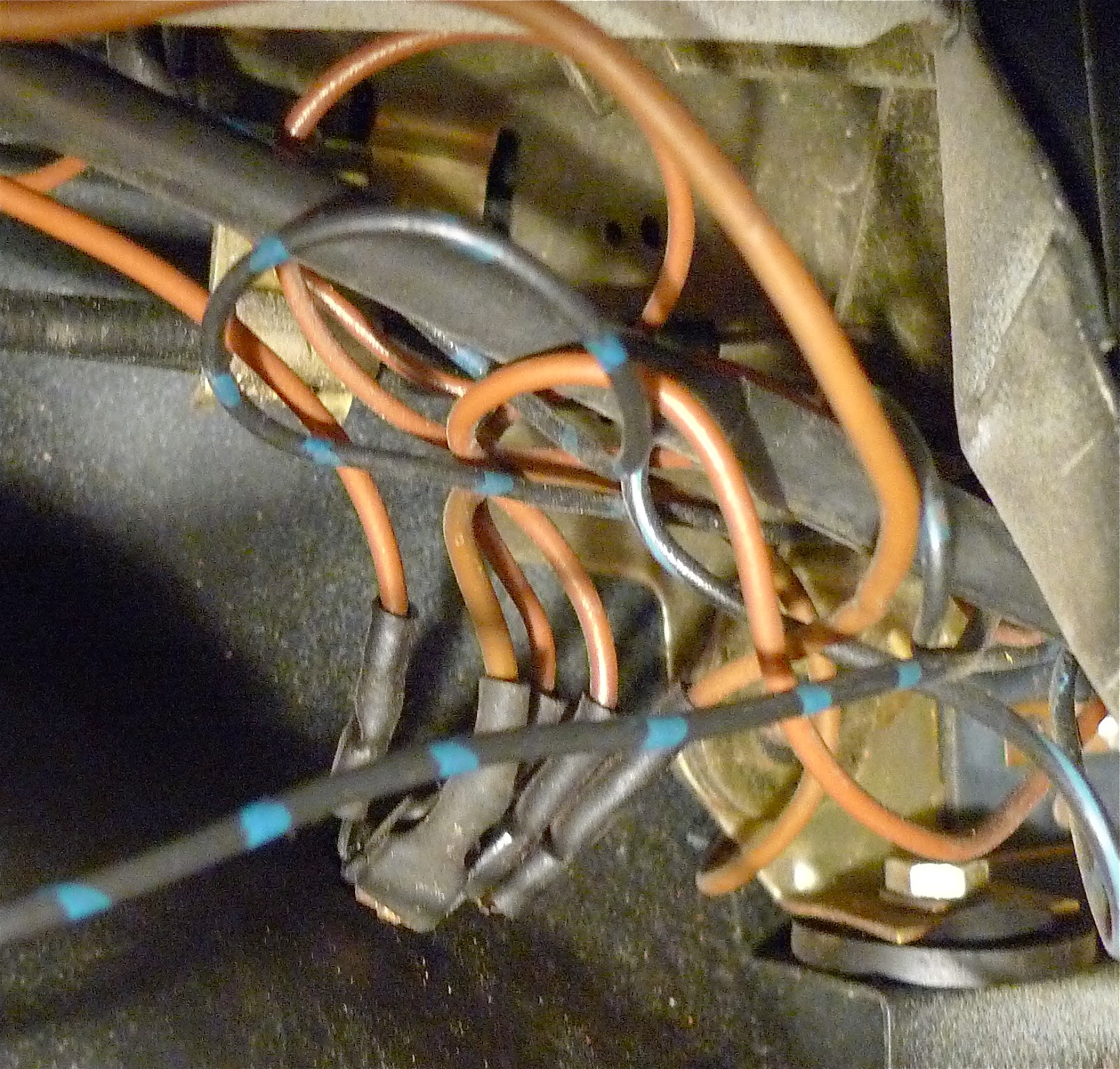 |
| The Feds. |
The deep origins of all of this grew from the hot rod cars that were built starting in the 1920s following the 18th Amendment to the U.S. Constitution which established the Prohibition of Alcohol, and they were built in order to provide fast alcohol delivery automobiles that could outrun federal agents, until the Prohibition of alcohol was repealed with the 21st Amendment to the U.S. Constitution in 1933.
 |
| Crash! Filled with illicit booze. Web photo |
I don't believe that any Porsche was ever raced in a NASCAR competition, but the roots of bad guy 'outlaw' car culture have their origins in the romance of illicit alcohol, but mainly the high-speed delivery of it. As with so many other things today, fashion is everything; conformity to the restrictions of a certain style take precedence over pretense of actual function. And, even though 'outlaw' cars make believe that they are outside of societal norms, they very, very strictly conform to rules of their own, some of which have evolved quite far from fast, night-time delivery requirements.
 |
| One of the best rum runners ever. 1940 Ford V-8. Web photo |
 |
| Cement? Probably not in this case. Web photo |
 |
| That should be enough ground clearance. . . Web photo |
How does the 356 fit into this picture? California is a big part of it. It's true that outlaw 356s are now built anywhere on Earth, and no doubt there are hot-rodding efforts applied to them in various ways, but according to my perspective the styling modality defining the 356 Outlaw originated somewhere in the western part of the U.S.A., with a focus on California when 'style-above-all-else' became the main operating factor.
And so an 'Outlaw' 356 is a beast of a very narrowly defined sort. It often has a (ridiculous) ride height, extra louvers on the engine lid, sometimes louvers on the sides à la the 550 Spyder Porsche - although even the 550s didn't have such louvered flanks much of the time. The car might have performance mods, too. If it falls outside of these parameters, then it isn't an outlaw. An 'outlaw' must be an oxymoron it seems, because most of the cars are fake representations of bad cars that never existed. You can't run much rum inside of a 356.
 |
| OK, it's way over the top, but you get the idea. Dune Bodyworks project. |
So, who is the 356 Outlaw, Outlaw? It is not someone who is attempting to rebuild a 356 with novel imagination, but rather he is a person who is building a conformist, outlaw 1955 356 coupe while trying to be secretive about it as if he were breaking new ground, which he isn't. It's hilarious.
Here's what happened: A friend of mine was going to a post office; he had to wait for a parking spot and he had other waiting cars in front of him, and behind. In other words, he couldn't move. A geezer, sorry to say, began to back out of the spot next to my friend, and although my immobile friend blew his car's horn as rapidly and loudly as he could, the geezer backed right into the rear door of my friend's Volvo, destroying it. The 'Old Fart' (to quote my friend, "He was an even older fart than I am!") is a WWII veteran, well known in the community and not a bad guy, but . . .
 |
| Not the car mentioned here, but the same. Willhoit project, 1953 car. |
There were additional louvers cut into the engine lid, and side louvers, possibly of fiberglass, attached to the flanks. I asked if I could take a picture of the car, for this blog. "No!" was the answer. Why not? Because I did not have the permission of the owner, and the body shop guy did not want the owner to, "Give him shit," if I took photos with no permission. He must have known something. I could photograph it on the street if it were driving around, but not in the shop. Why not?
"I'll give you the owner's phone number," the shop guy said, "and you can ask him yourself." OK, fine, but it was an obvious ploy. Just then the shop guy had to deal with a customer, but when he returned he asked me for my phone number, so that he could call me with the owner's number. "I already called him," the receptionist said, "while you were busy. He said 'NO! No one is to photograph that car!' " Really?
 |
| Sometimes they can look pretty good. Emory Motorsport project. |
I have to admit that I'm being harsh in my ill-founded judgement of this 356's owner; maybe it's going to turn out really nice and he just wants it kept under wraps until it's finished. Fair enough, but why the bullying approach to doing so? I'll ask my friend to snoop around when he picks up his Volvo.
EDIT: Newsflash - He just dropped by with his repaired Volvo and it looks very nice. It only took a couple of days to have the door changed. The Porsche has vanished. This suggests that this body shop did the paint work only, and that the car has now gone elsewhere for the rest of its rebirth. I'll see what I can find out. . .
 |
| Willhoit, again. |

































